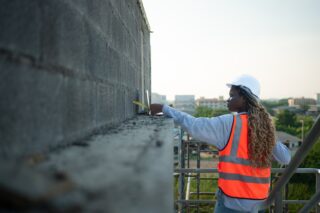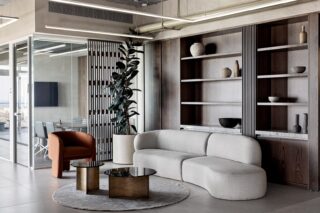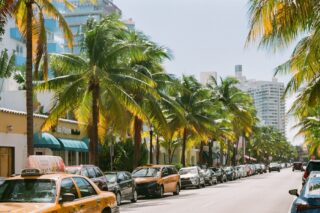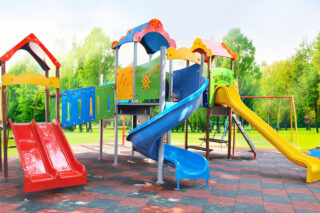In a webinar, we learn how Japan and Taiwan are rethinking sustainable design strategies, focusing on creativity, resource reuse, and circular economy in response to climate and cultural challenges.
Messe Frankfurt has a new series of online events available for manufacturers and retailers. Its Digital Academy offers in-depth expert knowledge and a networking function for new business contacts and exchanges. In a recent webinar Eisuke Tachikawa (Japan) and Johnny Chiu (Taiwan), two well-reputed architects and designers from Northeast Asia, introduced a unique approach to their design process. Together, they explored how observing contemporary culture, evolution, and climate change can lead to more creative and sustainable design solutions.
Decarbonizing Lifestyle Through Design
Looking at the severe rise in CO2 emissions and the global increase in natural disasters and extreme weather incidents, Japanese architect and graphic designer Eisuke Tachikawa has made it his personal mission to respond to those challenges in his work. During the webinar, the CEO and Founder of NOSIGNER, clarified how a better understanding of biological evolution and human adaptation to it can enhance the process of creativity for designers in manifold ways. Tachikawa calls this concept of creative learning from evolutionary principles “Evolutional Creativity”.
“We need to be creative but we also need to know how”, he claimed during his keynote.
According to the Japanese designer, we can resolve many climate-related problems through design and creativity. Therefore, we must imitate evolution, excavate history, and understand human society and environment.




Contemporary Culture of a Fast Economy
As the first Taiwanese designer to clinch the prestigious World Architecture Festival/INSIDE World Interior of the Year, Johnny Chiu joins Eisuke Tachikawa by addressing similar challenges such as overgrowth and chaos regarding modern city development.
“The current culture of the fast economy in Taiwan has produced a lot of unaesthetic design”, he said.
With his company JC. Architecture & Consulting he focuses on the positive aspects of today’s fast-paced culture. In that sense, Johnny Chiu integrates familiar concepts of modern culture such as lightness, mobility, convenience, speed, and temporality into his design. At the same time, his work responds to the sustainability challenge. How so? JC. Architecture & Consulting goes beyond fast economic thinking and “fake designs” by taking time for slow investigation on how to resource and re-use materials in sustainable ways.
In the course of their keynote, both architects highlighted personal projects in the field of Japanese and Taiwanese design demonstrating these approaches.

A Little Museum Store in the Taipei Fine Arts Museum
Animated, expanding, and rotabable in space: with light “flying shelves” over a length of 2.6 meters, JC. Architecture & Consulting realized a novel approach for the new retail store in Taipei’s Fine Arts Museum (TFAM). Their unique, creative design led to more commercial success, as designer Johnny Chiu pointed out.
While the “dancing” shelves can be adjusted and adapted for different requirements, they integrate the contemporary culture of mobility and lightness – and likewise take up the metabolism design of the 70ies.





Making use of waste leather: “Bloom” Chair
With the extraordinary lounge chair “Bloom”, shown at the Milan Design Expo 2024, JC. Architecture & Consulting created an innovative design furniture that transforms waste fabric into a useful everyday item. The soft foldable armchair is made of very thin pieces of KOBE beef leather, a byproduct typically discarded due to its minimal commercial value. KOBE LEATHER® is a leather brand that carefully tans the raw hides of Kobe Beef using skilled techniques.
“We discovered that KOBE’s thin beef leather has a high density in fibers and can be stretched”, explained designer Johnny Chiu.
With his team of 27, he created a paper model first, inspired by unfoldable lanterns.
“The leather itself serves as a structure to stretch out the furniture, less as a surface”, he explained how JC. Architecture & Consulting found a unique way to make use of the previous waste material.
With the novel furniture – available in charcoal grey and peach pink – KOBE could reduce transport costs by 90 percent. At the same time the design chair “Bloom” raised lots of global recognition and interest, especially as it is flat-packed and can be easily opened and closed.



Paper-based: Happier Café in Taipei and Tokyo
Another challenge in terms of sustainability and the circular use of resources was the realization of the HAPPIER Café by JC. Architecture & Consulting. The art café project was first installed in Taipei, then moved to Tokyo.
“We had to create a trending café on 400 square meters with a budget of just EUR 3,300, or EUR 8.25 per square meter,” Johnny Chiu recalled.
After much research, the designer found a special brown paper recycled from an old library that was the perfect innovative solution for creating design furniture and lamps for the interior.
“We reused 13 rolls of paper to create this stunning café landscape that sparks and inspires new ways of thinking.”


Reusing steel waste: Cascade use in the designer’s office
From his many design projects, architect Eisuke Tachikawa highlighted one in more detail: his office.
“We had a huge amount of steel waste from a wall frame”, he recalled. “Instead of melting it into a new product – which would create a lot of CO2 – we recycled it smoothly on the spot by converting it into design elements on the ceiling.”
That way, Tachikawa made the circle of recycling tremendously smaller.
“We call this approach cascade usage in architecture and design”, stated the specialist for a circular economy.
He strongly advises architects to future-proof their work by cascading usage strategies to prolong product longevity, move products less around and upcycle in different ways to promote circular economy, renewable energy, and climate adaptation.











